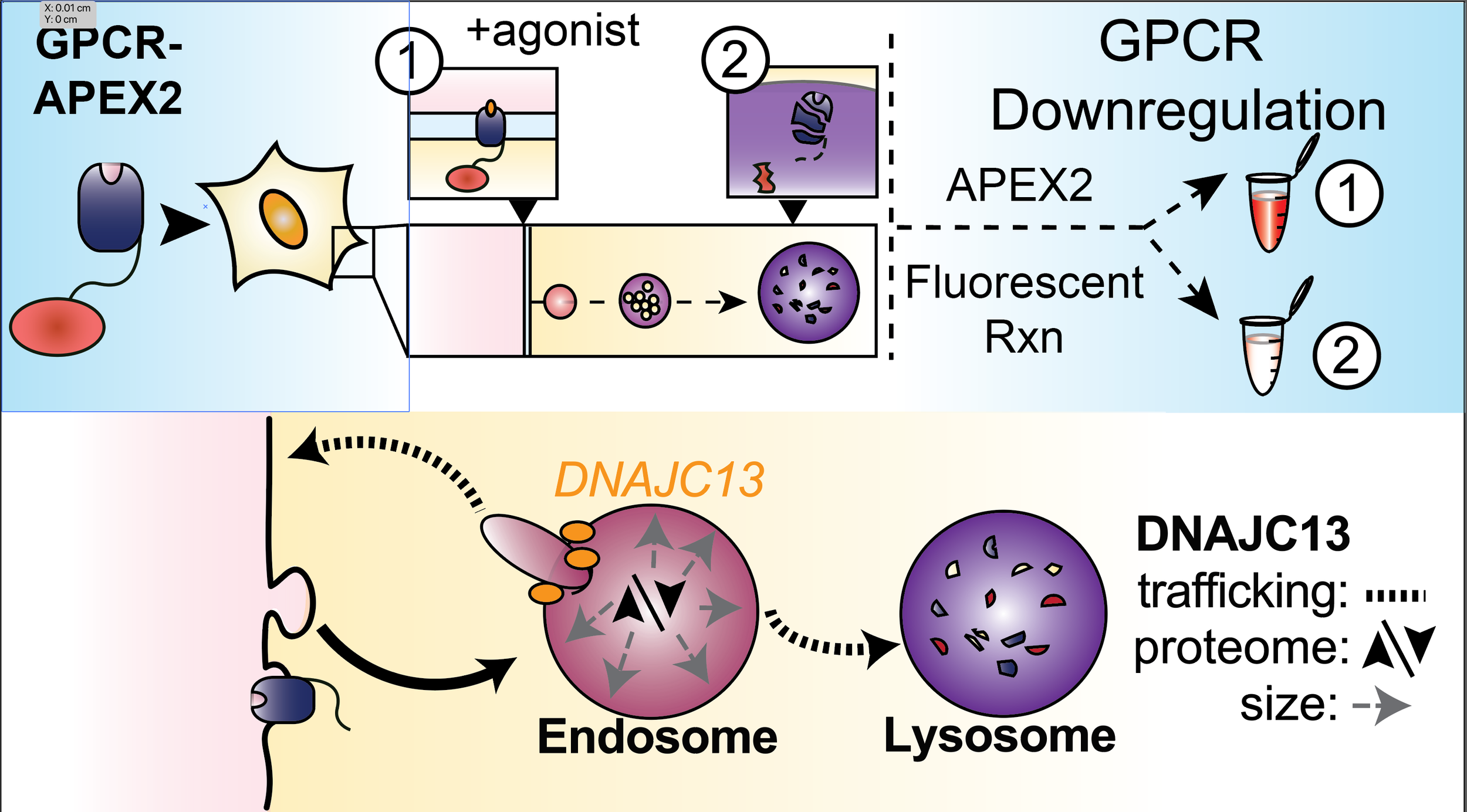Control of GPCRs in space and time
For cells to be healthy, proteins and lipid must be moved between organelles with high spatial and temporal fidelity. Collectively, movement along these cellular highways is called membrane trafficking. Underscoring its importance, multiple human diseases—including Alzheimer’s, Parkinson’s, and Charcot-Marie-Tooth—have links to mutations in cellular proteins responsible for membrane trafficking. Our goal is to map the proteins which control trafficking of GPCRs—from protein synthesis (cradle) to degradation (grave). By mapping the highways and byways of the cell, we will gain insights into how membrane trafficking operates under normal conditions and is perturbed during disease.
We are presently focusing on:
•How does the endosome determine the distinct fates of activated GPCRs?
•What proteins recognize one type of GPCR and save it from lysosomal degradation while selecting another type of GPCR for destruction?


